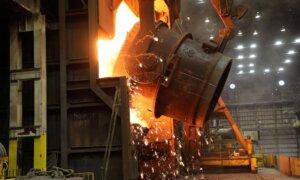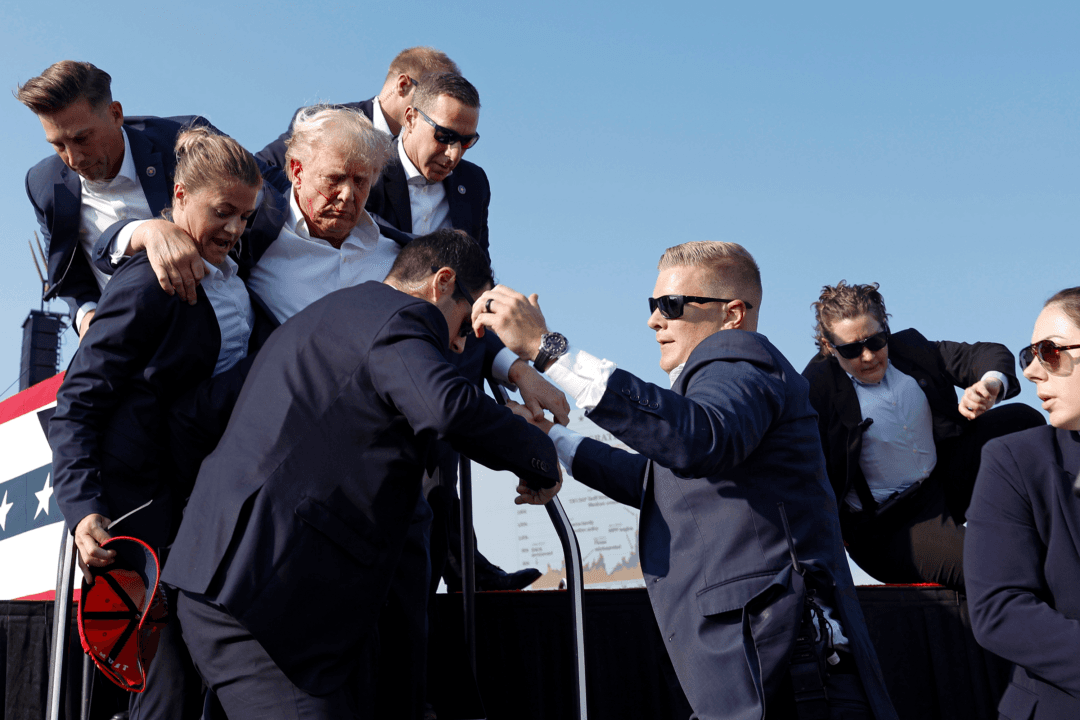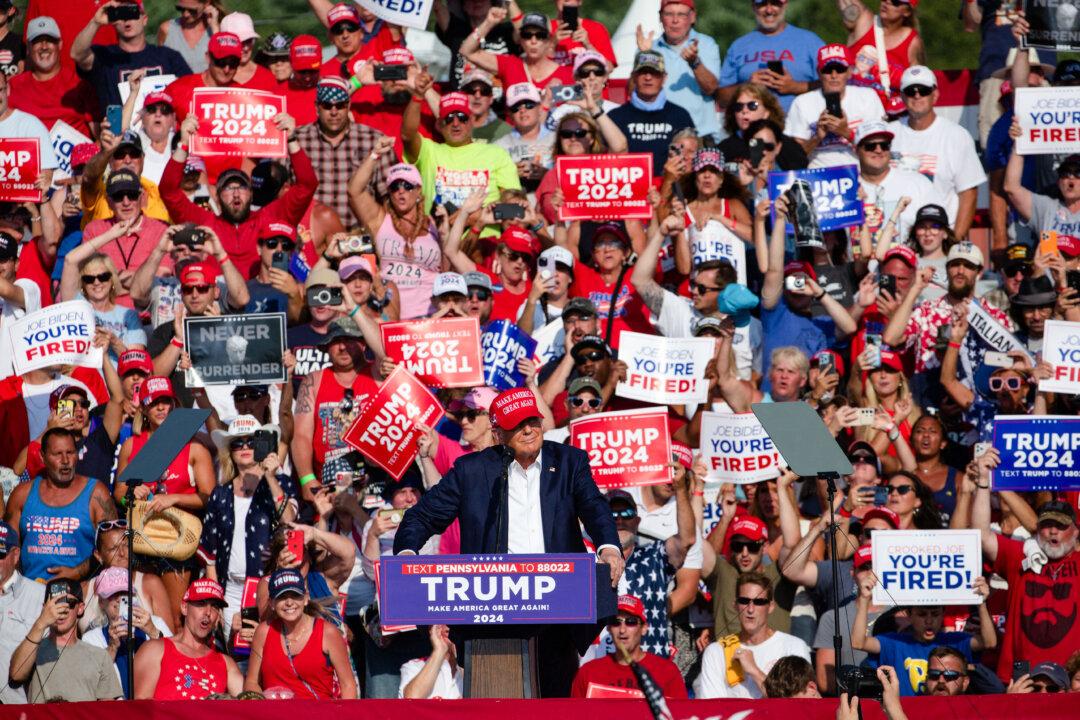The historic American company U.S. Steel helped to write the story of the United States as we know it today.
That may be why the recent announcement of the $14.9 billion acquisition of U.S. Steel by Japan-based Nippon Steel Corporation (NSC) was so shocking that it caused members of Congress to urge the Committee on Foreign Investment in the United States to review and block the acquisition.
“Steel is essential to our national security, and we believe that the United States’ marquee steel company should remain under American ownership,” a Dec. 19, 2023, letter to the committee, signed by Sen. Bob Casey (D-Pa.), Sen. John Fetterman (D-Pa.), and Rep. Chris Deluzio (D-Pa.) reads.
President Joe Biden believes U.S. Steel was an integral part of our arsenal of democracy in World War II and remains critical to national security, national economic adviser Lael Brainard said in Dec. 21, 2023, comments.
Steel Modernized America

To imagine the implications of steel’s future, it helps to look back at how steel is interwoven into the development of the modern United States.
Metal has been around for thousands of years, but good quality, strong metal could only be made in small quantities.
Early railroad tracks were originally made of iron and had a short life as they rusted, expanded, and required frequent replacement.
In 1857, English engineer Henry Bessemer developed a way to make large quantities of steel at a low cost. Steel is strong, has some flexibility, and proved a better material for railroad track.
By the 1870s, railroad construction in the United States had increased dramatically. Although 45,000 miles of track had been laid before 1871, according to the Library of Congress, between 1871 and 1900, another 170,000 miles were added to the nation’s growing railroad system.
During this time, Andrew Carnegie grew Carnegie Steel, and in the 1890s, it was the most profitable steel company in the world. In 1901, banker J. P. Morgan merged Carnegie Steel Corporation with nine other steel companies to form U.S. Steel Corporation.
Charles M. Schwab became the first president of U.S. Steel. But in 1903, he left that position to form another iconic company, Bethlehem Steel.
“The steel industry shaped the western expansion of the United States, laying the railroad tracks to California and then making sure we didn’t get invaded,” Mike Piersa, historian at the National Museum of Industrial History in Bethlehem, Pennsylvania, told The Epoch Times. Affiliated with the Smithsonian Institution, the museum sits in the shadow of the now-closed steel stacks of Bethlehem Steel.
“After the Civil War, the United States Navy went to pieces, and by the 1880s, they were afraid that even the South Americans could come up here and invade. Their Navy was better than ours. The [U.S.] government decided they need to have a heavy forging program and really get the steel industry up to world class standards,” Mr. Piersa said.
The British and other European countries had developed enough technology by the 1880s to build warships entirely of steel. The United States realized it needed the productive capacity to build similar ships. It was an effort to build Navy ships that led to more steel innovation.
“That was one of the big reasons you have the steel industry that you have today. It’s simply because it was so vital to national defense. Without that, we would have been in a really dicey situation back in the 1880s and 1890s,” Mr. Piersa said. “It expanded from there to the point where Bethlehem was building a ship a day by World War Two.”

Steel foundries popped up near railroad construction sites, near shipyards, and near cities, which—between the 1890s and 1930s—steel was reshaping by making skyscrapers possible.
The height of buildings was limited before steel—usually to five or six stories. Higher than that, and there was a risk that the wind could damage a brick or cast-iron building. But steel’s flexibility allowed builders to go taller. Steel buildings may sway, but they won’t snap over in the wind.
It was the same story for bridge construction; strong, flexible steel became the preferred material.
In 1928, the Ford River Rouge complex went into operation in Dearborn, Michigan, producing automobiles with steel from its on-site steel mill.
Foreign Steel Changes Industry

Working in a steel mill is difficult and dangerous. Workers use heavy machinery and are exposed to loud noise, vibrations, heat, and toxins as they melt down iron ore and burnt coal carbon called coke and shape it into useful materials.
Workers started unionizing in the late 1800s, demanding higher pay, shorter hours, and safer work conditions.
Steelworkers stopped working nationwide in a 116-day strike of the United Steelworkers of America in 1959. Unable to get U.S. steel, builders started buying foreign steel for the first time.
Decline of Legacy Steel
Multiple companies often worked on large projects together, Mr. Piersa said. For example, the Verrazzano-Narrows Bridge in New York was constructed with materials from Bethlehem Steel, Harris Steel Co., and American Bridge Company, a subsidiary of U.S. Steel.“They just assumed that when the World Trade Center was built, Bethlehem Steel would get one tower and U.S. Steel would get the contract to build the other tower,” Mr. Piersa said. That project got going in 1975, but the New York Port Authority used subcontractors who sourced the steel mostly from Japan.
When that contract didn’t come through, the larger companies realized they would be building fewer skyscrapers. Bethlehem closed its fabricated steel division where workers measured and cut construction holes in the beams. U.S. Steel closed its Ambridge, American Bridge, division, its fabricating arm, in 1984.
“They realized they just really are not going to be competitive anymore,” Mr. Piersa said. In the 1970s and 1980s, large steel companies faced new competition in the United States and foreign competition.
“A lot of steel was being imported at below production costs, which they call dumping. That has been a major problem in recent decades for the United States steel industry,” Mr. Piersa said.
Some foreign companies got subsidies from their governments to offset the cost of making steel so they could make inroads into the U.S. market by selling steel below cost, he said.
NSC was found in 1998 to be dumping steel products in the United States.
New Business Model

After the 1959 strike, U.S. Steel and Bethlehem Steel continued normal operations and, Mr. Piersa said, they didn’t pay attention to changes in the industry, including a company with a new business model.
Nucor didn’t intend to become a leading steel manufacturer, but as of Dec. 22, 2023, Nucor is listed as a $43.76 billion steel business. It’s building a new steel mill in Apple Grove, West Virginia. Nucor didn’t respond to a request for comment.
In a 1987 joint venture between Nucor and Japan-based Yamato Kogyo, the Nucor-Yamato Steel Co. started manufacturing steel beams in Arkansas; it has developed into the largest structural steel mill in the Western Hemisphere.
“They made the same product that they made here in Bethlehem, but at a fraction of the cost,” Mr. Piersa said. That was another blow to Bethlehem Steel and U.S. Steel.
Nucor started manufacturing steel in South Carolina in 1969 just to supply its own company, Vulcraft, with the material to make steel joists for the construction industry.
Nucor did things differently from the big steel companies. Its workers weren’t unionized. (Today, the company offers a scholarship program for every child of a Nucor employee, providing $3,500 per year toward college.) And instead of making steel from raw materials, it has always recycled scrap steel, melting down steel items for new uses.
“As North America’s largest recycler, Nucor typically recycles 22 million tons of scrap annually, including 9 million cars,“ the company’s website reads. ”Recycled steel reduces mining waste by 97 percent, air pollution by 86 percent, and water pollution by 76 percent.”
Nucor, Ohio-based Cleveland-Cliffs, and the European ArcelorMittal from Luxembourg offered to acquire U.S. Steel, but NSC offered more money.
- Nucor, United States, $42 billion
- POSCO, South Korea, $31 billion
- ArcelorMittal, Luxembourg, $23 billion
- Nippon Steel Corporation (NAC), Japan, $18 billion
- Steel Dynamics, United States, $18 billion
- Toyota Tsusho Corp, Japan. $17 billion
- Baoshan Iron & Steel Co. Ltd, China, $17 billion
- Reliance Steel & Aluminum Co., United States, $16 billion
- Novolipetsk Steel PJSC, Russia, $12 billion
Nippon Comments
In its November 2023 second-quarter investor relations briefing, NSC was asked whether it was interested in acquiring U.S. Steel. The company said only that it was refraining from commenting on individual cases. In that same briefing, the company said its global strategy is to abandon the idea of maintaining domestic production capacity by earning marginal profits from exports and to build a system that captures local demand through local production. NSC indicated it would like to promote local production and sales with a focus on India, the United States, and ASEAN countries including especially Thailand.U.S. Steel will keep its name and Pittsburgh headquarters, but it will become a wholly owned subsidiary of NSC. The transaction is subject to approval by U.S. Steel shareholders and receipt of regulatory approvals.
NSC will fund the acquisition by borrowing from Japanese banks and has already secured financing commitments.
The company’s strategy is to acquire steel mills and to expand the capacity of existing bases, according to a statement from the company. NSC acquired Essar Steel (now AM/NS India) in India in December 2019 and G Steel and GJ Steel in Thailand in March 2022.
“The U.S. steel industry is largely driven by domestic demand and U.S. steelmakers are not highly dependent on exports of products,” the NSC statement said. “It has been remarkable that there is a trend to bring operations back to the home U.S. market in downstream sectors such as energy and manufacturing, due to relatively low energy prices in the United States and structural changes in the world economy.”
NSC expects a high level of demand for high-grade steel in the United States, which it calls the largest market among developed countries.







